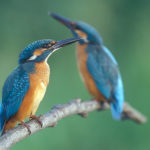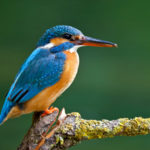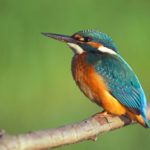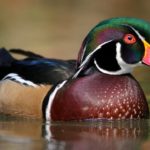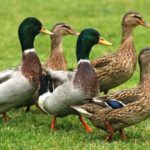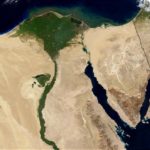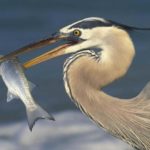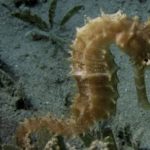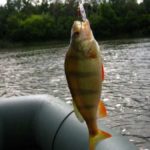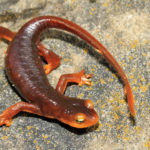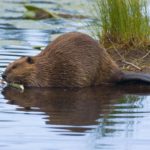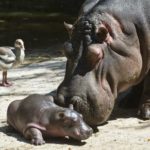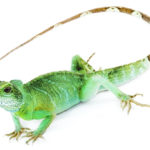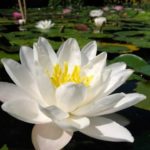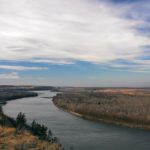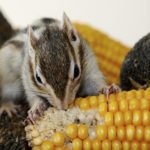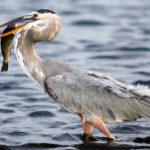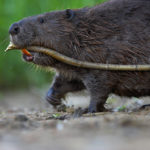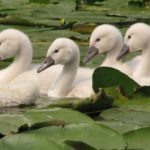Kingfishers – information
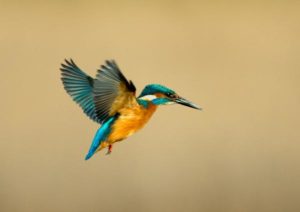 The handsome kingfisher has adapted to life near the running water – streams and rivers. The blue color of its plumage is well suited for camouflage – when it quickly flies over the water, it is almost impossible to notice it. Most often the kingfisher settles on steep, covered with bushes and other vegetation, the banks of rivers, lakes and other ponds with shallow running water), especially if the reservoir is protected from wind and waves.
The handsome kingfisher has adapted to life near the running water – streams and rivers. The blue color of its plumage is well suited for camouflage – when it quickly flies over the water, it is almost impossible to notice it. Most often the kingfisher settles on steep, covered with bushes and other vegetation, the banks of rivers, lakes and other ponds with shallow running water), especially if the reservoir is protected from wind and waves.
Kingfisher in large quantities eats small fish. They prefer to settle on the banks of pure streams covered with vegetation. In the warm regions for wintering, fly only those kingfishers who live in the extreme north of Europe and Asia. Others spend the winter near streams and rivers that do not freeze. Most of them die of hunger when severe frosts occur. Kingfishers react very quickly to pollution of water bodies, because only in clear water they are able to look out and fish.
The basis of the food of kingfisher is small fishes, such as smelt. Usually a bird sits on a bough of a tree growing above water, and looks out prey. Noticing the prey, the kingfisher falls swiftly into the water, pressing the wings back to the body. He sustains the victim with a strong beak and floats to the surface of the water, helping himself with wings. Then he takes off and sits on one of the branches. Before eating the caught prey, the kingfisher stuns her, hitting the branch. The menu also includes insects, crabs and frogs.
Although the kingfisher’s plumage is very bright, yet it perfectly masks it, so this bird is not so easily seen over the blue smoothness of a stream, river or lake. It is easiest to find out a kingfisher according to the characteristic sounds that it publishes during a fast flight. During nesting period, kingfishers are most often found near rapid rivers, on steep banks of which they dig nests for breeding offspring.

